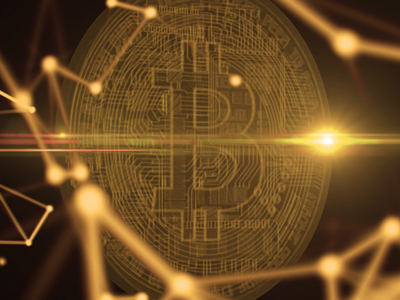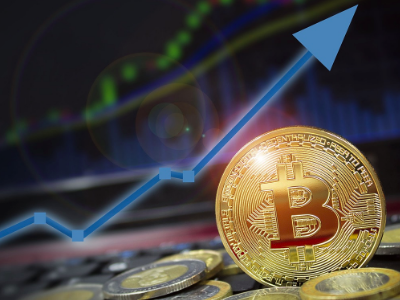Almost 9 out of 10 ICO projects showed negative profitability. Initial exchange offers, which replaced those fraud-infested ICO schemes, are now risking to repeat their way. We have worked out 5 tips for those who is planing IEO.
- No hype
Initial exchange offer (IEO) is an obvious analogue of initial coin offering (ICO), which reached their peak in 2017, but then due to the number of scammers in the area and investor lack of trust dropped down dramatically.
According to analyst Larry Chermak, more than 5,600 ICOs have been held in the world altogether, during which projects managed to attract according to various sources from modest $14 billion up to a record of $64.5 billion. At least 89% of ICO tokens showed a negative profitability by now. ICO bubble peak came at the end of 2017-beginning of 2018, together with the growth of cryptomarket.
IEO differs from ICO. In IEO partial project responsibility for an obvious connection with scammers falls upon the cryptocurrency exchange, which will conducts the IEO. The idea is simple: if it is a large crypto-exchange with a worldwide reputation, then it is not interested in being noticed in the marketing promotion of any scam. Also, exchanges guarantee coin after the IEO, which allows you to withdraw coins faster to start trades.
After the stagnation of 2018, IEO as a method of attracting finance gave a second wind to many projects, especially those related to blockchain and cryptocurrencies. It all started with the stunning success of the initial BitTorrent exchange offer on the Binance Launchpad platform, where the tokensale was completed in 18 minutes, during which 59.4 billion BTT tokens were sold and about $7.2 million were raised. Binance was followed by other major crypto-exchanges, launching their own platforms for IEO. But there was no a boom, like that happened with ICOs: perhaps investors do not trust crypto-exchanges enough to choose related projects, perhaps they do not trust projects and wait for a breakthrough in the industry. One thing is clear — there is no hype around IEO and no easy money prospects for new projects.
“Taking into account that at least 89% of all ICOs have negative returns in USD and that IEO is starting to show the same trend, it seems that the vast majority of all ICOs are unable to keep the value in the long term. This means that the winners can get a big jackpot,” concludes Larry Chermak.
- The product bet
How to hit this jackpot? The simplest answer from Captain Obvious is to create a product that will meet the most “hot” needs of a wide range of users. A product that will not be limited to one market and borders of one state. The product, which even before the full-scale launch — that is, only according to the description and MVP — will be understandable and clear to an investor. If after a wide marketing campaign, you have not received the desired response, then your product is not enough interesting for market participants.
Entrepreneur and investor Arkady Moreynis in his Telegram channel proposed to replace the term “minimum viable product” to “minimum delightful product”.
“It’s about which minimum we have to do to verify that our product is not just viable, but fascinating.”
According to him, the idea for the product should not be liked or disliked, but it “should be one without which someone can not go.”
“Only a lazy one does not kick Windows. Although their system is installed on 88% of computers. As said — “mice cried, pricked, but continued eating a cactus”.
- Community bet
IEO is not a funding round involving only “angels” and venture funds. This is an offer to a wide range of retail investors. And in this case, the project needs to invest in marketing and grow the audience in advance.
Behind successful products are always powerful ecosystems with developers and users. Communicate with the audience, teach it, talk about how the product is created, do not be afraid to contact users and ask them to test the new version, but do not wait for their leniency in case your product seems unnecessary to them.
For example, if you create security systems for “smart homes” in the United States, you should not expect a high interest in this platform in China, which is in a state of trade war with the United States and is quite closed community itself. If you still wish to enter the Asian market with a similar product, then you can not do it without adapting the product and creating a strong supporting community.
Community is not about cashback, airdrops or a loyalty system. Community is a unity of like-minded people connected with one passion, idea, interest. This is especially true for decentralized platforms, which by their architecture already involve a more active participation of the community in the process of creating a product.
Lara Lee, former Vice President of Harley Davidson Motor Co., a company known for its consumer community, noted in a column for Forbes in 2009:
“When companies do this — by creating communities that bring tangible and emotional value to users, through employees and customers working together to solve common challenges — they create strong bonds of loyalty and open up new sources of growth.” Good marketing always puts people in the center.”
- Do not forget about regulation
You can tell for years about a future without national governments and advocate going underground and crypto-anarchy, but if you are conducting an initial exchange offer (IEO), think about how much you work in the legal field — and most importantly, choose which jurisdiction this “field”is in. On the one hand, digital technologies open up to the creators of new products a truly global market without borders, on the other hand — national regulators are not idle. Even if one is registered on the British Virgin Islands and conducted IEO on the Asian exchange, American regulator will start an investigation against you if it finds that someone from the US citizens purchased tokens of your project.
So far, the position of the US Securities and Exchange Commission (SEC) is that almost all tokens of ICO projects (with rare exceptions, for example, Ethereum) are considered as securities. “There are none of those that have seen that are not securities,” said sec head Jay Clayton, speaking at a hearing in the appropriations Committee of the US House of representatives on April 2018.
It is the presence of the US citizens among users that gave occasion to introduce new allegations against the operator of crypto currency exchange Bitfinex and the Issuer stablon Tether — iFinex.
- Be crossborder — learn to interact interculturally
The digital asset industry reduces cross-border barriers and opens the door to the global market for small young projects. But technology is developing faster than we are: in the digital world, the boundaries may be almost blurred, but in our minds — when it comes to communication — collective attitudes still rule. “Doing business in different cultures is a new level of complexity. But the reality of modern business is that we have to work with people from different parts of the world and in different countries of the world”, — said intercultural communication specialist Darren Menabni, a native of Canada, living in Tokyo. Differences in business communication and approach are particularly striking when it comes to the West and East differences: for example, in China it is not acceptable to clearly demonstrate their feelings and show violent emotions in business communication and such behavior on the part of Western partners can cause the leaders of Chinese companies to reject.
“The difference in culture and mentality often prevents international projects from being successful, — says Evgeny Egorov from Coineal. — When a project from one country wants to succeed in the world market or the market of another country, it should make every effort to get in touch with potential investors, and not rely on the easy formation of a community around, most likely, an unfamiliar idea for them.”
Translation of information about the project into Asian languages, PR in the media and social networking, airdrop and bounty programs, work with bloggers and advisers are all parts of ordinary marketing work, but it does not guarantee acceptance of a product or service in a new country or culture. And most often it is an iterative process, with errors and the search for new ways and approaches, with the gradual involvement of new users and supporters for the idea or technology. When a stable demand is formed and there is interest in the market — investors come.
Following these simple rules will help to more consciously approach the primary exchange placement. But they do not give any guarantees: despite different investments in marketing and promotion, it is never possible to say in advance which project “shoots” and which does not. In any case, a successful IEO is a joint positive work of both the project teams and the exchanges where they place their tokens.
Coineal Medium: "Instructions for IEO: how not to suffer the same fate as ICO"












